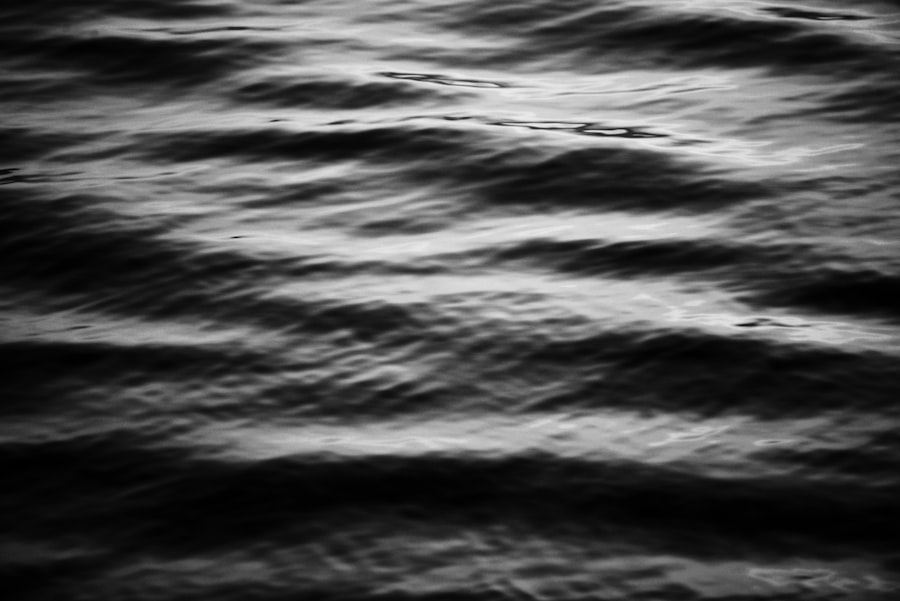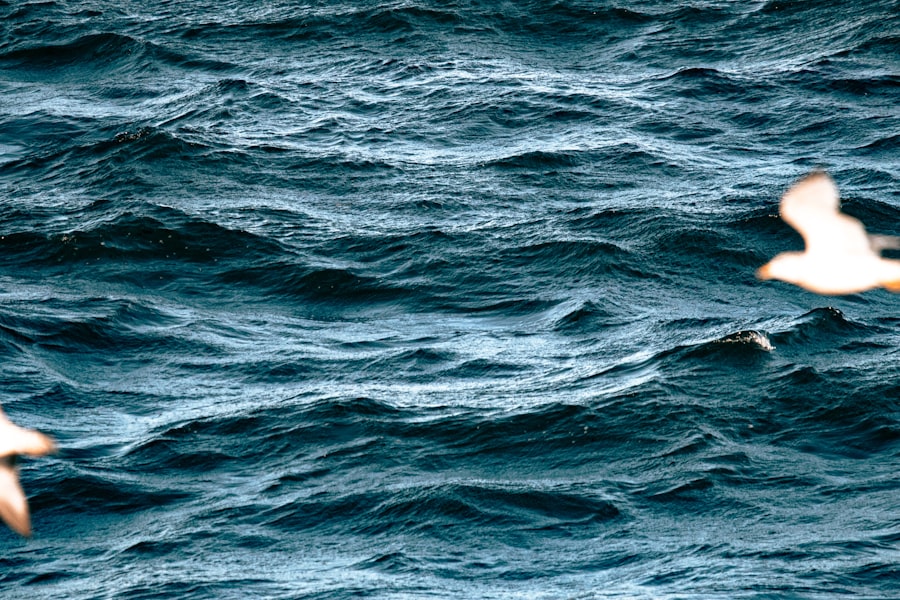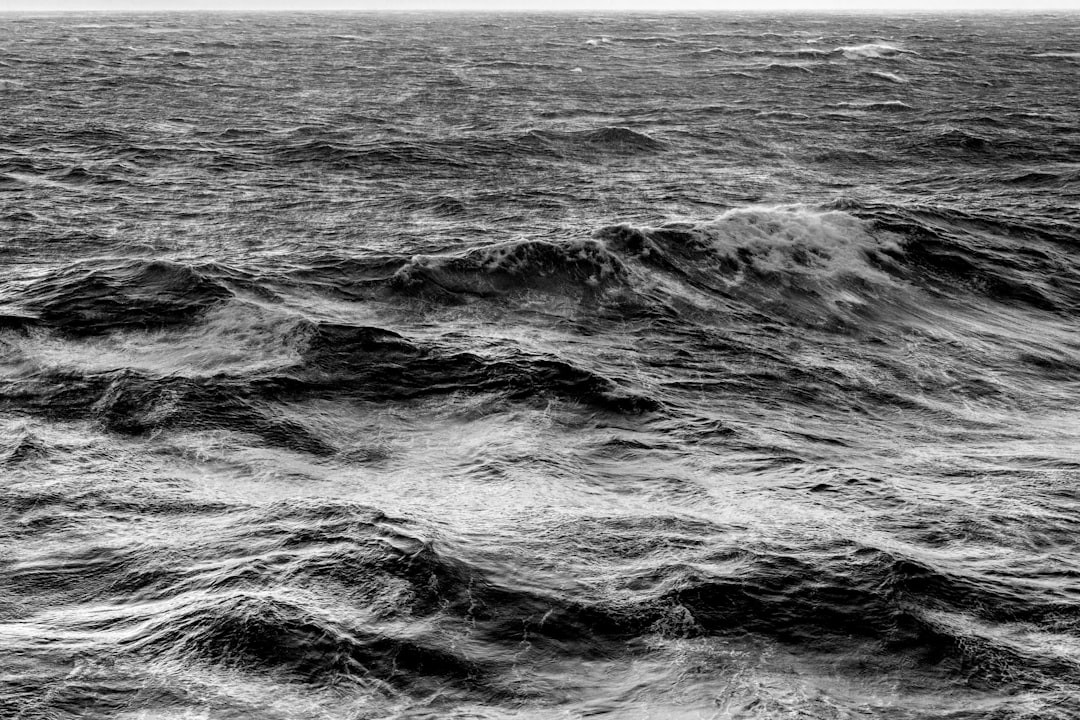The Drake Passage, a body of water situated between the southern tip of South America and Antarctica, is renowned for its tumultuous seas and unpredictable weather patterns. This narrow stretch of ocean, measuring approximately 600 kilometers (370 miles) wide, serves as a critical conduit for maritime traffic between the Atlantic and Pacific Oceans. Its strategic importance is underscored by the fact that it is the only route for vessels traveling directly to Antarctica, making it a vital passage for scientific research, tourism, and commercial shipping.
Geographically, the Drake Passage is characterized by its deep waters and strong currents, which are influenced by the confluence of the Antarctic Circumpolar Current.
The combination of strong winds, shifting currents, and sudden weather changes can create conditions that are both dangerous and disorienting for even the most experienced sailors.
Key Takeaways
- The Drake Passage is a body of water between South America’s Cape Horn and the South Shetland Islands of Antarctica, known for its rough seas and challenging conditions.
- Drake Passage waves can reach heights of 30 feet or more, posing a significant danger to ships and passengers.
- Navigating Drake Passage waves requires careful planning, including choosing the right vessel and following expert advice for safe crossing.
- Safety precautions for Drake Passage travel include securing loose items, wearing appropriate gear, and staying informed about weather conditions.
- Choosing the right vessel for Drake Passage crossings is crucial, with considerations such as size, stability, and experienced crew.
The Dangers of Drake Passage Waves
The waves in the Drake Passage are notorious for their size and ferocity. They can reach heights of up to 15 meters (49 feet) during storms, making navigation perilous. These towering waves are often steep and closely spaced, creating a chaotic sea state that can be disconcerting for vessels attempting to traverse the passage.
The unpredictable nature of these waves is exacerbated by the region’s frequent storms, which can arise with little warning, further complicating the challenges faced by mariners. The dangers posed by these waves extend beyond mere physical hazards; they can also lead to significant structural damage to vessels. The force of large waves can cause equipment failures, compromise hull integrity, and even lead to capsizing in extreme cases.
Additionally, the psychological toll on crew members and passengers cannot be underestimated. The sheer power of the ocean in this region can instill fear and anxiety, making it essential for those who venture into these waters to be well-prepared and informed about the potential risks.
Tips for Navigating Drake Passage Waves

Successfully navigating the waves of the Drake Passage requires a combination of skill, experience, and preparation. One of the most critical tips for mariners is to stay informed about weather conditions and forecasts before embarking on a journey through this challenging area. Utilizing advanced weather tracking technology and consulting with experienced navigators can provide valuable insights into potential storm patterns and wave heights, allowing crews to make informed decisions about their routes.
Another essential strategy is to adjust sailing techniques to accommodate the unique conditions of the Drake Passage. For instance, maintaining a steady speed while navigating through rough waters can help minimize the impact of waves on the vessel. Additionally, positioning the ship at an angle to incoming waves can reduce the risk of broaching or capsizing.
Mariners should also be prepared to alter their course if conditions become too severe, prioritizing safety over adherence to a predetermined route.
Safety Precautions for Drake Passage Travel
| Safety Precautions | Details |
|---|---|
| Life Jackets | All passengers must wear life jackets during the passage. |
| Emergency Drills | Passengers will participate in emergency drills before departure. |
| Experienced Crew | The vessel will be operated by a highly experienced crew. |
| Weather Monitoring | Continuous monitoring of weather conditions for safe travel. |
| Medical Facilities | The vessel will be equipped with medical facilities and staff. |
Safety should always be a top priority when traveling through the Drake Passage. One of the most effective precautions is ensuring that all crew members are well-trained in emergency procedures and familiar with the vessel’s safety equipment. Regular drills should be conducted to prepare for potential incidents, such as man-overboard situations or equipment failures.
This training not only enhances safety but also fosters a sense of confidence among crew members. In addition to crew preparedness, vessels should be equipped with state-of-the-art safety gear, including life rafts, emergency beacons, and communication devices. Having a reliable means of communication is crucial in case of emergencies, as it allows crews to call for assistance or relay their position to rescue services if needed.
Furthermore, maintaining a well-stocked supply of provisions and medical supplies can prove invaluable during extended voyages in this unpredictable region.
Choosing the Right Vessel for Drake Passage Crossings
Selecting an appropriate vessel for crossing the Drake Passage is paramount to ensuring a safe and successful journey. The ideal ship should be designed to withstand rough seas and equipped with features that enhance stability and maneuverability. Ice-strengthened hulls are particularly important for vessels operating in this region, as they provide added protection against potential ice encounters.
In addition to structural integrity, vessel size plays a significant role in navigating the Drake Passage. Larger ships tend to handle rough seas better than smaller vessels due to their increased mass and stability. However, smaller ships may offer greater agility and flexibility in changing conditions.
Ultimately, the choice of vessel will depend on various factors, including the specific mission objectives, crew experience, and anticipated weather conditions.
Weather Considerations for Crossing the Drake Passage

Weather conditions in the Drake Passage can change rapidly and dramatically, making it essential for travelers to remain vigilant and adaptable. The region is known for its strong winds, which can reach speeds of over 100 kilometers per hour (62 miles per hour) during storms. These winds can create hazardous wave conditions and significantly impact navigation strategies.
Mariners should closely monitor weather forecasts and be prepared to adjust their plans accordingly. Utilizing satellite technology and real-time weather updates can provide valuable information about approaching storms or shifts in wind patterns. Additionally, understanding seasonal variations in weather can help crews anticipate potential challenges; for example, summer months may offer calmer seas compared to winter when storms are more frequent.
Expert Advice for Dealing with Drake Passage Waves
Experts recommend that those planning to navigate the Drake Passage seek guidance from seasoned mariners who have firsthand experience with its unique challenges. These individuals can provide invaluable insights into effective strategies for managing rough seas and navigating safely through turbulent waters. Learning from their experiences can help new sailors develop a deeper understanding of the passage’s complexities.
Moreover, participating in training programs or workshops focused on maritime safety in challenging environments can enhance skills and preparedness. These programs often cover essential topics such as wave dynamics, emergency response techniques, and advanced navigation methods tailored specifically for rough seas like those found in the Drake Passage.
The Importance of Proper Navigation in the Drake Passage
Proper navigation is crucial when traversing the Drake Passage due to its unpredictable nature and potential hazards. Navigators must be adept at using various tools and technologies to chart their course accurately while accounting for changing conditions. GPS systems, radar technology, and traditional navigational charts all play vital roles in ensuring safe passage through this challenging waterway.
Additionally, understanding local currents and tidal patterns is essential for effective navigation. The Antarctic Circumpolar Current can significantly influence vessel movement, making it imperative for navigators to factor these elements into their planning. By combining modern technology with traditional navigational skills, mariners can enhance their ability to navigate safely through the Drake Passage.
Emergency Protocols for Drake Passage Wave Incidents
In the event of an emergency while navigating the Drake Passage, having well-defined protocols in place is essential for ensuring crew safety and minimizing risks. Vessels should have clear communication channels established so that all crew members are aware of their roles during an emergency situation. Regular drills should be conducted to familiarize everyone with these protocols and ensure a swift response when needed.
Emergency protocols should include procedures for dealing with severe weather conditions, equipment failures, or medical emergencies. For instance, if a vessel encounters extreme waves that threaten its stability, crew members should know how to secure loose items, brace themselves properly, and communicate effectively with one another to maintain order during chaotic situations.
The Psychological Impact of Drake Passage Waves on Travelers
The psychological effects of navigating through the tumultuous waves of the Drake Passage can be profound for travelers. Many individuals may experience anxiety or fear when faced with towering waves and unpredictable weather conditions. This psychological impact can be exacerbated by feelings of helplessness in such a vast and powerful environment.
To mitigate these effects, it is essential for travelers to prepare mentally before embarking on their journey through the Drake Passage. Engaging in relaxation techniques or mindfulness practices can help individuals manage stress levels during challenging moments at sea. Additionally, fostering a supportive atmosphere among crew members and passengers can create a sense of camaraderie that alleviates anxiety and enhances overall morale.
The Future of Drake Passage Navigation
As maritime technology continues to advance, the future of navigation in the Drake Passage holds promise for improved safety and efficiency. Innovations such as autonomous vessels equipped with advanced sensors may revolutionize how ships traverse this challenging waterway. These technologies could enhance situational awareness and enable real-time adjustments based on changing conditions.
Furthermore, ongoing research into climate change impacts on ocean currents and weather patterns will provide valuable insights into how navigational strategies may need to adapt over time. By staying informed about these developments and embracing new technologies, mariners can enhance their ability to navigate safely through one of the world’s most formidable maritime challenges—the Drake Passage.
The Drake Passage, known for its tumultuous waters and towering waves, is a critical area for understanding oceanic currents and their impact on global climate patterns. An insightful article that delves into the dynamics of this region can be found on MyGeoQuest. This piece explores the unique geographical and meteorological conditions that contribute to the Drake Passage’s notorious reputation among sailors and researchers alike. For a deeper understanding of these fascinating oceanic phenomena, you can read more in the article available at MyGeoQuest.
WATCH HERE: Drake Passage: Earth’s Deadliest Waters Revealed
FAQs
What are the Drake Passage waves?
The Drake Passage waves refer to the large and powerful waves that occur in the Drake Passage, the body of water between South America’s Cape Horn and the South Shetland Islands of Antarctica.
What causes the Drake Passage waves?
The Drake Passage waves are primarily caused by the strong westerly winds and the interaction between the Antarctic Circumpolar Current and the Southern Ocean. These factors create a unique and intense wave environment in the region.
How big are the Drake Passage waves?
The Drake Passage waves can reach significant heights, with some waves exceeding 30 feet (9 meters) in height. These waves are known for their power and can pose a challenge to ships and vessels navigating through the area.
Are the Drake Passage waves dangerous?
Yes, the Drake Passage waves are considered dangerous due to their size, power, and the challenging weather conditions in the region. Ships and vessels crossing the Drake Passage need to be well-prepared to navigate through these waves.
What precautions should be taken when encountering the Drake Passage waves?
Ships and vessels crossing the Drake Passage should be equipped to handle rough seas and strong winds. It is important for crews to secure all equipment, ensure the safety of passengers, and be prepared for the challenging conditions that the Drake Passage waves can present.
